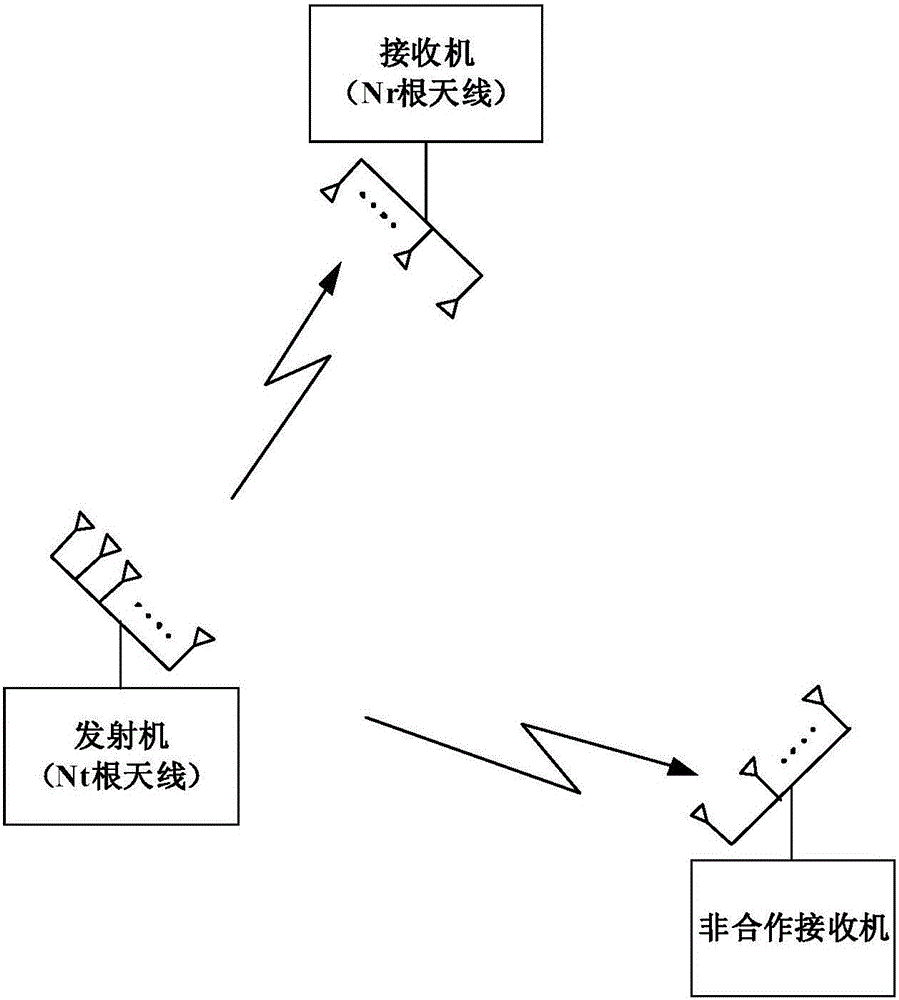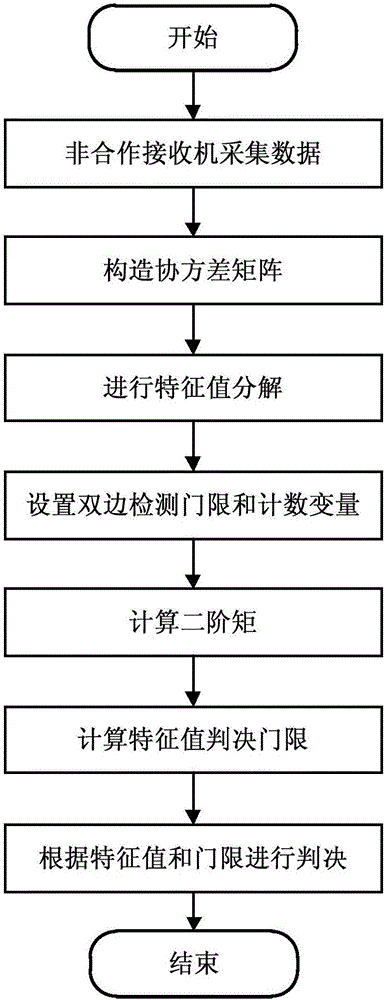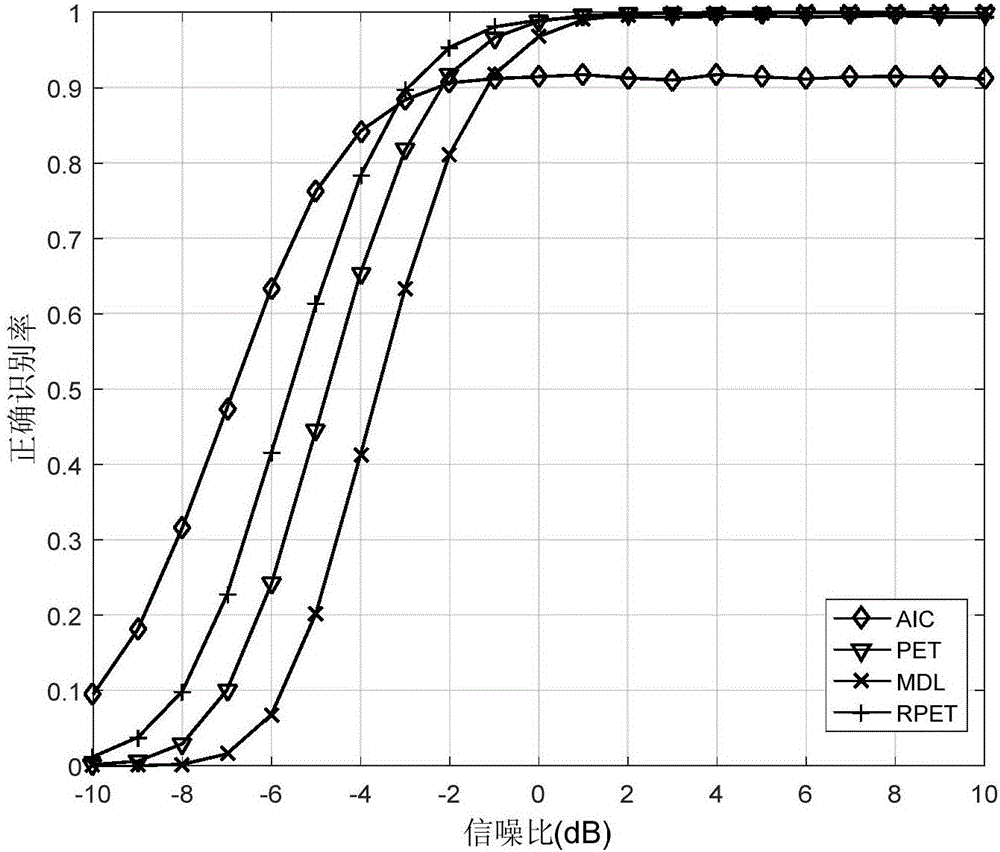MIMO (Multiple Input Multiple Output) transmitting antenna number blind estimation algorithm based on random matrix theory and feature threshold estimation
A technology for the number of transmitting antennas and the number of antennas, which is applied in the field of blind recognition of communication signals and cognitive radio, and the estimation algorithm of the number of transmitting antennas. It can solve the problems of low recognition accuracy, poor real-time performance of the algorithm, and high computational complexity, and achieve high correct recognition. High efficiency, good convergence effect, and improved real-time effect
- Summary
- Abstract
- Description
- Claims
- Application Information
AI Technical Summary
Problems solved by technology
Method used
Image
Examples
Embodiment Construction
[0027] The embodiments of the present invention will be further described in detail below in conjunction with the accompanying drawings.
[0028] refer to figure 1 , the system model used in the present invention includes a transmitter and a non-cooperative receiver, wherein the number of antennas of the transmitter is N t , the number of antennas of the non-cooperative receiver is N r , where N r >N t .
[0029] In this implementation, the number of antennas N of the non-cooperative receiver is set r =8, the number of antennas of the transmitter N t =4.
[0030] The present invention completes the process of estimating the number of transmitting antennas as follows: figure 2 As shown, the steps to realize it are as follows:
[0031] Step 1, non-cooperative receiver time domain data collection:
[0032] Form the received signal of the non-cooperative receiver into an N r ×N-dimensional received signal matrix Y to realize data collection, the result is:
[0033] ...
PUM
 Login to View More
Login to View More Abstract
Description
Claims
Application Information
 Login to View More
Login to View More - R&D
- Intellectual Property
- Life Sciences
- Materials
- Tech Scout
- Unparalleled Data Quality
- Higher Quality Content
- 60% Fewer Hallucinations
Browse by: Latest US Patents, China's latest patents, Technical Efficacy Thesaurus, Application Domain, Technology Topic, Popular Technical Reports.
© 2025 PatSnap. All rights reserved.Legal|Privacy policy|Modern Slavery Act Transparency Statement|Sitemap|About US| Contact US: help@patsnap.com



